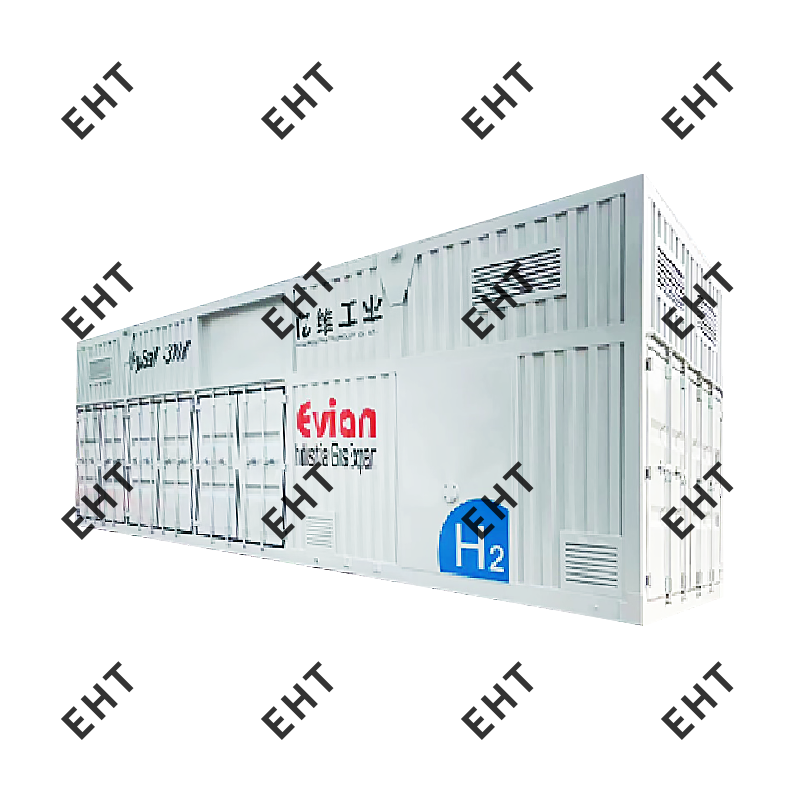As the global energy landscape shifts toward decarbonization, hydrogen has emerged as a pivotal element in the pursuit of clean energy systems. Among the various methods of producing hydrogen, modular and containerized hydrogen production units—commonly referred to as Hydrogen Production Containers—are gaining traction as a flexible and scalable solution for both industrial and distributed energy applications. These self-contained systems encapsulate the core components required for hydrogen generation, compression, and sometimes storage, within a transportable format. Their strategic advantage lies in their ability to decentralize hydrogen supply chains and facilitate deployment across diverse geographies and sectors.
System Architecture and Functional Components
A typical Hydrogen Production Container integrates a comprehensive suite of subsystems within a standardized enclosure, often conforming to ISO shipping container dimensions for logistical ease. The core of the system is the hydrogen production unit, usually based on water electrolysis—either Proton Exchange Membrane (PEM) or Alkaline Electrolyzer technologies—driven by electricity from grid or renewable sources. These electrolyzers split water molecules into hydrogen and oxygen with high efficiency, minimal emissions, and operational flexibility.
Supporting components within the container may include power control units, water purification systems, deoxygenation modules, hydrogen dryers, and automated process controllers. In advanced configurations, the system also incorporates gas compression equipment and buffer storage tanks, allowing for on-demand hydrogen dispensing or pipeline injection.
Thermal management is another critical aspect of container design. Active cooling and ventilation systems are deployed to maintain electrochemical stability and prevent overheating under continuous or peak-load operations. Additionally, redundant safety mechanisms—such as pressure relief valves, hydrogen leak detectors, and emergency shutdown systems—are integrated to meet stringent industrial safety standards.
Scalability and Deployment Versatility
One of the key strengths of containerized hydrogen systems is their modularity. Units can be deployed individually for localized applications or scaled up in parallel configurations to meet higher hydrogen demands. This modular approach enables phased investments, reducing upfront capital risk and aligning production capacity with evolving market needs.
The compact, all-in-one format allows Hydrogen Production Containers to be sited in locations previously inaccessible to conventional hydrogen infrastructure. Remote industrial facilities, off-grid renewable energy installations, urban fueling stations, and maritime ports can all benefit from localized hydrogen generation without the need for complex civil engineering or large-scale plant construction.
Furthermore, the transportable nature of these containers simplifies cross-border deployment, making them attractive for demonstration projects, temporary energy needs, and mobile hydrogen applications such as construction site electrification or military field operations.
Renewable Integration and Grid Flexibility
Hydrogen Production Containers are particularly suited for integration with intermittent renewable energy sources such as solar PV and wind power. By coupling with on-site renewables, these systems enable the generation of green hydrogen—a form of hydrogen with zero lifecycle emissions. This not only decarbonizes hydrogen production but also adds value to curtailed or surplus renewable electricity, effectively functioning as an energy storage medium.
In grid-connected environments, containerized electrolyzers can also serve as demand response assets, dynamically adjusting their power consumption based on real-time electricity market conditions. This capability contributes to grid balancing and supports the broader integration of variable renewable generation into the energy mix.

Applications Across Emerging Hydrogen Economies
Hydrogen Production Containers are proving essential in jumpstarting regional hydrogen economies. In the transportation sector, they are deployed at hydrogen refueling stations for fuel cell electric vehicles (FCEVs), reducing reliance on centralized hydrogen delivery. In industrial settings, they supply process hydrogen to sectors such as electronics, metallurgy, and food processing where pipeline access is limited.
They are also playing a role in power generation, particularly in hybrid microgrid systems, where hydrogen is used as a storage medium and converted back to electricity via fuel cells during demand peaks or grid outages. In the future, containerized systems may become integral to ammonia production, synthetic fuels, and green steel manufacturing, all of which require scalable hydrogen inputs.
Challenges and Outlook
Despite their potential, containerized hydrogen systems face challenges related to cost competitiveness, regulatory alignment, and supply chain maturity. Electrolyzer capital costs remain a significant barrier, although ongoing advancements in materials science, manufacturing, and economies of scale are gradually reducing these hurdles.
Furthermore, harmonized safety standards and permitting procedures are essential to streamline deployment across jurisdictions. As the market matures, standardization of interface protocols, modular designs, and certification frameworks will further enhance the viability of Hydrogen Production Containers as a cornerstone of the hydrogen value chain.
Hydrogen Production Containers embody a pragmatic and forward-looking approach to hydrogen infrastructure development. Their mobility, scalability, and compatibility with renewable energy systems position them as a key enabler of decentralized hydrogen generation. As technological innovation and policy support continue to accelerate, containerized hydrogen solutions are poised to play a central role in the global transition toward a low-carbon, hydrogen-based energy economy.






